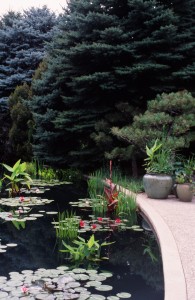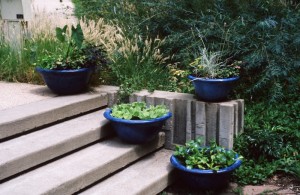
One way to do that (short of wading in and upsetting all of the creatures in the pond) is to grow a water lily (or two) in a smaller, above-ground container. In a container garden, the intricate and beautiful, even sometimes-fragrant flowers are within nose reach. You may not want to try turtles or koi, but aquatic plants, including water lilies, are very well suited to such confined quarters.

Water lilies do grow in soil, so planting one in a container requires that a durable pot be prepared for them. The first rule of growing aquatic plants is to provide a growing medium free of organic material. I know that seems to go against all of our gardening instincts, but the root zone of aquatic plants is quite anaerobic, meaning that the bacteria (and other microorganisms living there) use other pathways in the decomposition of organics that can result in smelly and even toxic conditions. Nice clay soil, even sand, will support their roots and not contribute to other noxious problems.
Most water lilies require about 10 to 12 inches of soil in their growing pot and another 10 to 20 inches of water over the surface of the soil, although there are a few dwarf varieties that will bloom in far less space. Shop for them online and read the descriptions of their size and growth pattern to determine what size container will be best. The decorative outer planter will need to be water tight, of course, and many will be fired with an impervious glaze. Other choices are porous clay or concrete pots, which can be sealed. If the container already has drainage holes, they can be plugged to provide the perfect mini-water garden. Be sure to add a few mosquito-eating fish to complete your mini-ecosystem.






Hi Virginia this is Lander Nicolait… Don’t know if you remember me but I was a friend of Barbara’s, Billy and Stevie Sheasley. Anyway we have a pond in our Mesa house, and I wanted to get some water lilies and was looking for some recommendations and advice on what would roll well here in town
Hope life’s been good to you, look forward to hearing from you
Hello,
Thank you for your inquiry. I’ve forwarded your request to Virginia at Lotusland. Hopefully the email still works.
Best,
Eye of the Day